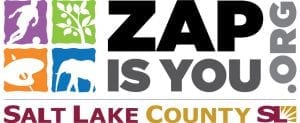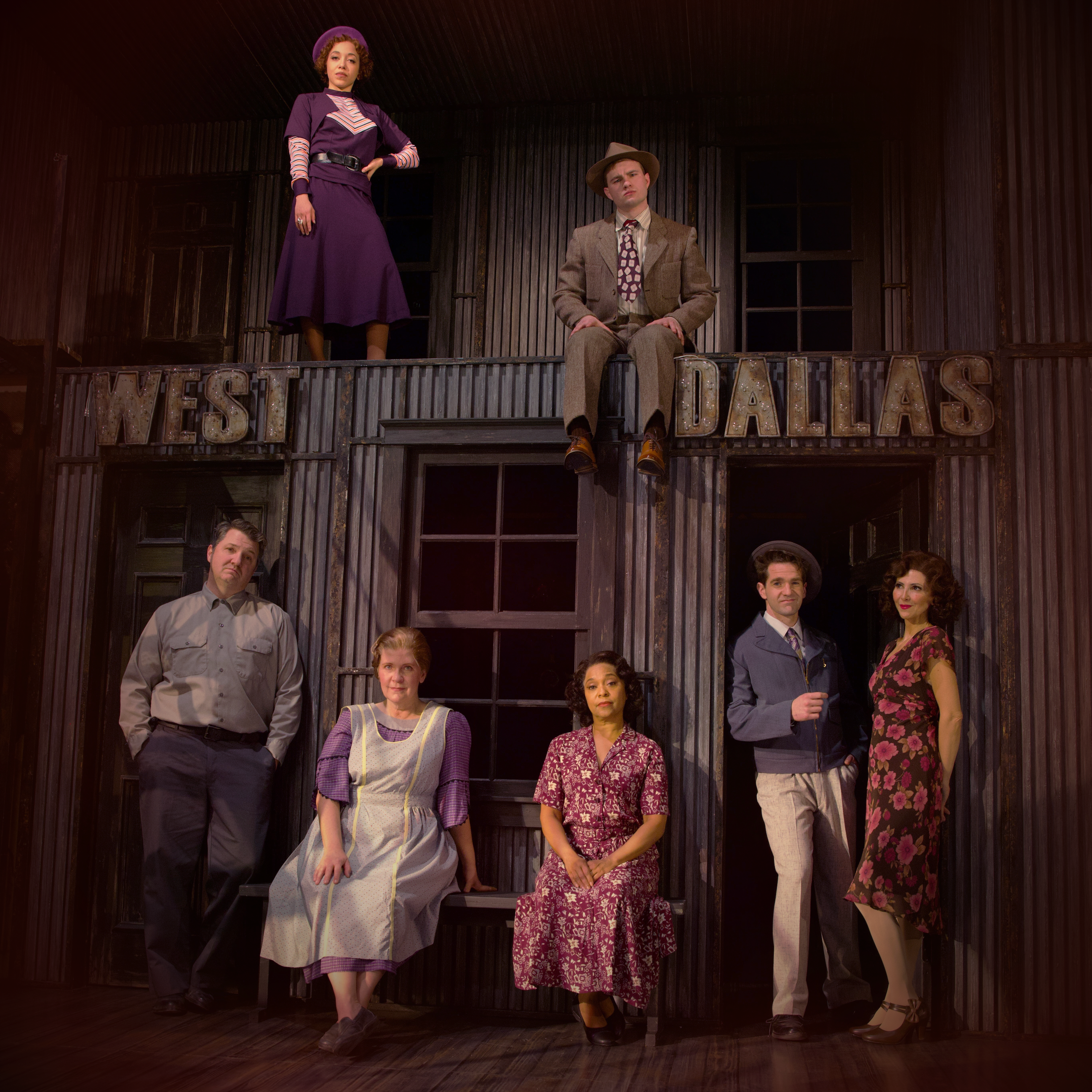SALT LAKE CITY — Bonnie Parker and Clyde Barrow have been capturing the nation’s attention since their spree of murderous robberies shook depression era Americans. The fascination of these characters has persisted into the 21st century including a successful 1967 Warren Beatty film, references in pop culture that extends to celebrities’ like Beyonce, and on to the 2009 premiere of Bonnie & Clyde, the musical. With book by Ivan Menchell, lyrics by Don Black, and music by Frank Wildhorn, Bonnie & Clyde premiered on Broadway in 2011 with a short thirty-six show run. Pioneer Theatre Company revives this show with an immaculate set design, talented actors, expert choreography, and a lively Orchestra. Nonetheless, the excellent production elements do not overcome the greatest flaw of this show, which is the choice to do it in the first place.
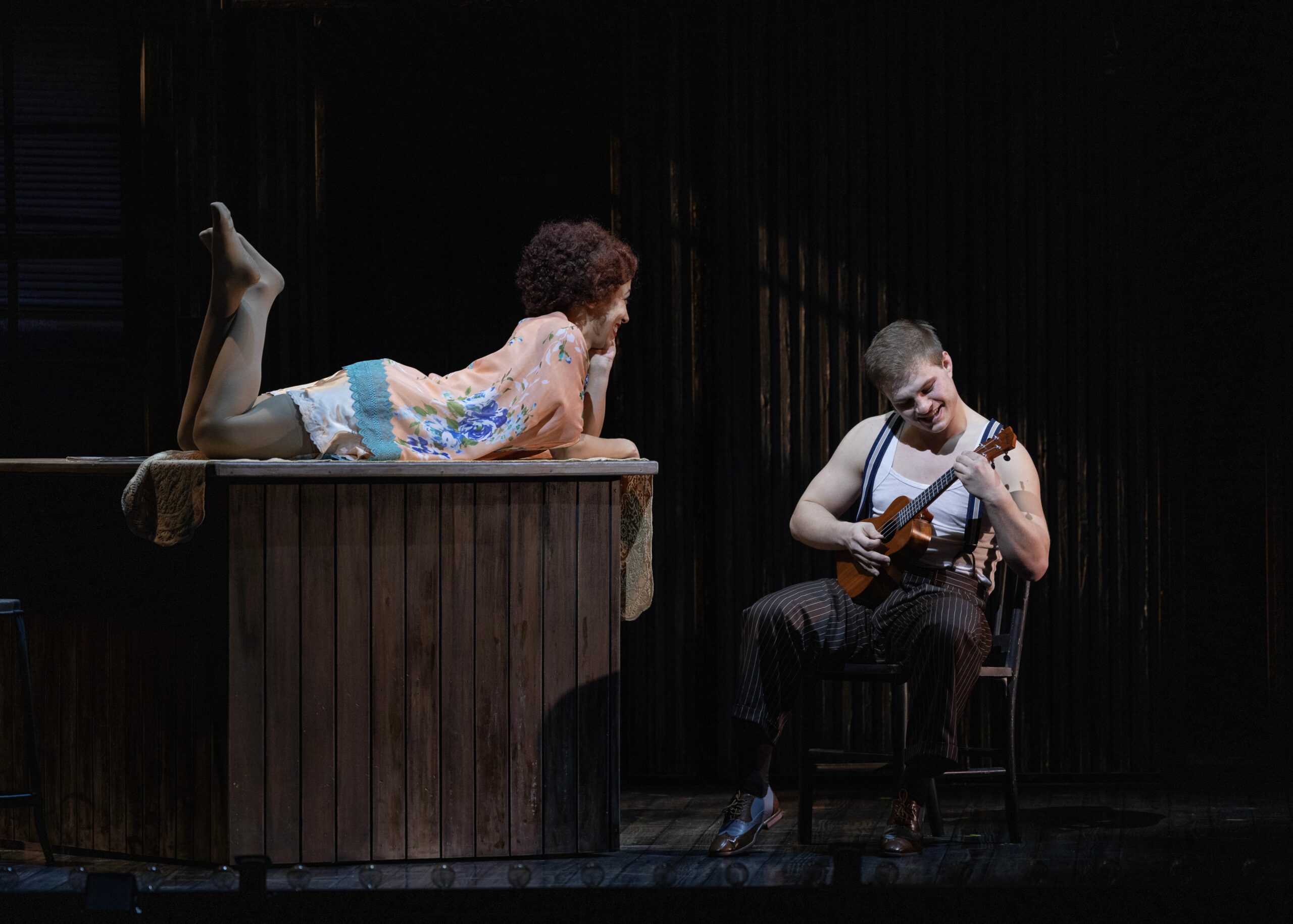
The book for Bonnie & Clyde is scattered and lacking in a commitment to tone or theme. This seems to have inspired the design choices as the set leads the audience to expect a darker and sinister criminal show. By contrast, the opening number of “Picture Show” sung by young Bonnie and young Clyde steers the audience in a thematic direction of lofty aspirations from small town kids.
Competing for a cohesive purpose in this play are depression era challenges leading to the desperation of crime, considerable superfluous time spent on developing sub characters storylines, and the attempt at a central love story that felt more saccharine than tragic. The slow first act was heavy in exceptionally boring exposition only to have an action-packed second act where most scenes with the fighting and tragedy are hastily inferred and don’t allow the audience much time for a response.
Though the weak book didn’t give this show a chance, PTC reliably delivered in the production elements of this show. The sepia tones of depression era motif from scenic designer Bryce Cutler was impeccable and the best set I have seen at Pioneer to date. The cool steel design was garnished with the real-life mug shots of Bonnie & Clyde and conspirators excellently accomplishing the feel of the era and the lack of life and hope the great depression brought.
The lighting design by Jose Santiago skillfully matched the set with deep reds being the only pop of color during tragedy or anger and sepia lighting on the theatre walls for full-theatre immersion into Bonnie & Clyde’s world. Live music was expertly woven into the production from an orchestra led by Tom Griffin. In keeping with the scattered nature of the book, varying music styles were part of the score including Gospel, Blues, Country, and Broadway. While the mix of genre did somewhat contribute to the lack of coherence of the show, each of those songs felt true to the time.
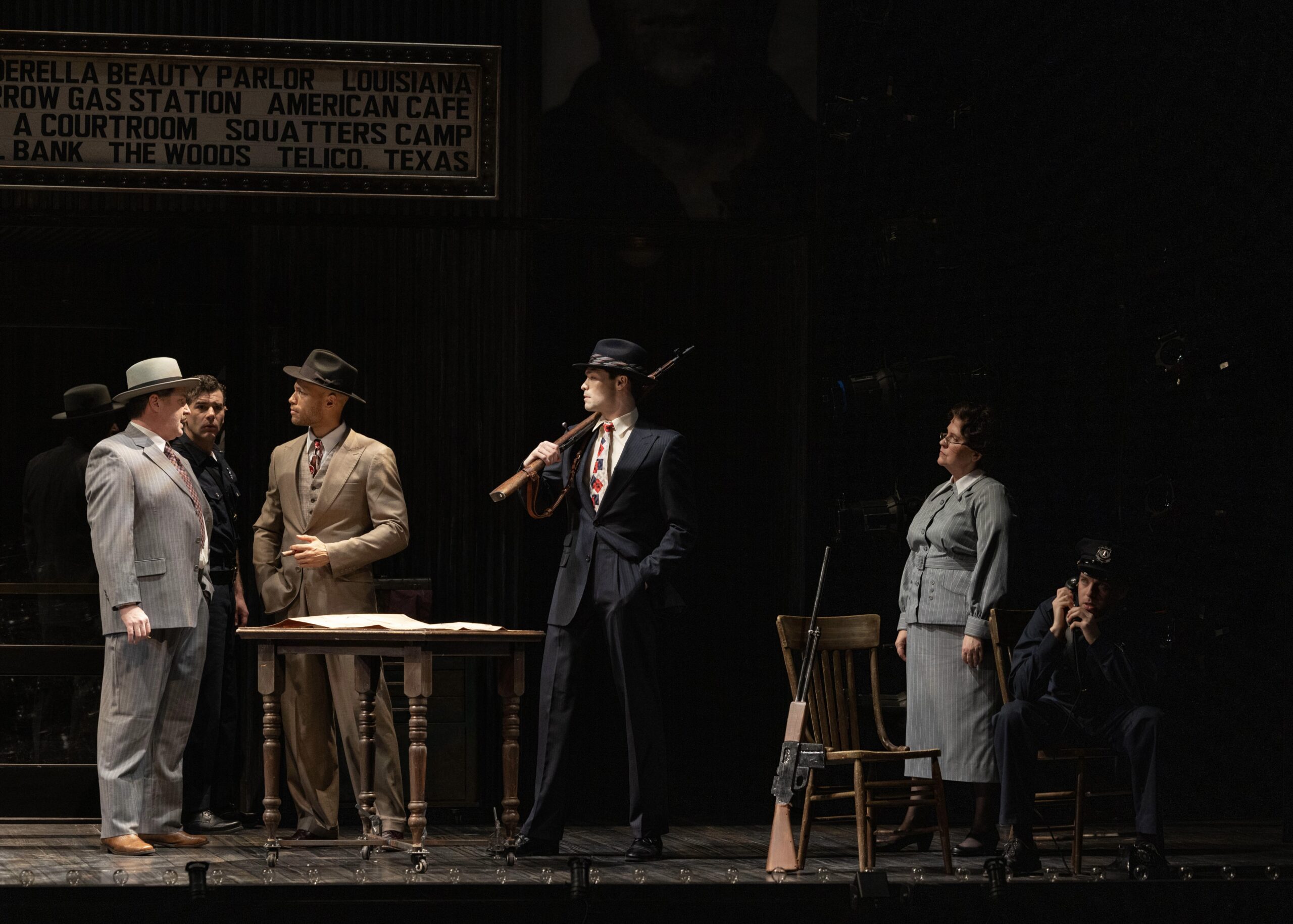
Directed and choreographed by Gerry McIntyre, Bonnie & Clyde did have some captivating numbers, particularly “God’s Arms Are Always Open.” This number represented the people of the time well and was auspiciously layered with Clyde’s descent into criminal life. The ensembles arms literally reaching desperately for the sky matching their figurative reach for hope and help from God. The vocals by Christian Brailsford as preacher in this song were memorable, especially his low runs. Vocals across the board were exceptional. Penny Hodson and Kiyan R. Wyness as young Bonnie & Clyde respectively were terrific in the opening number “Picture Show.”
Alanna Saunders as Bonnie soared in her solo numbers “Dyin Ain’t So Bad” and “How ‘Bout a Dance.” Michael William Nigro as Clyde gave engrossing solo numbers as well with his bouncing vibrato in “Raise A Little Hell” and “Bonnie.” While Saunders and Nigro both gave satisfying performances, I did enjoy each of them more individually than together. The chemistry between the two as Bonnie and Clyde felt forced and inauthentic, but their voices blended beautifully. Nigro as Clyde gave an urgent and energized portrayal of Clyde but failed to add much dynamic to his delivery after the plunge from hopeful young boy to hardened criminal. The show in general didn’t deliver the grit and severity one would expect of this story.
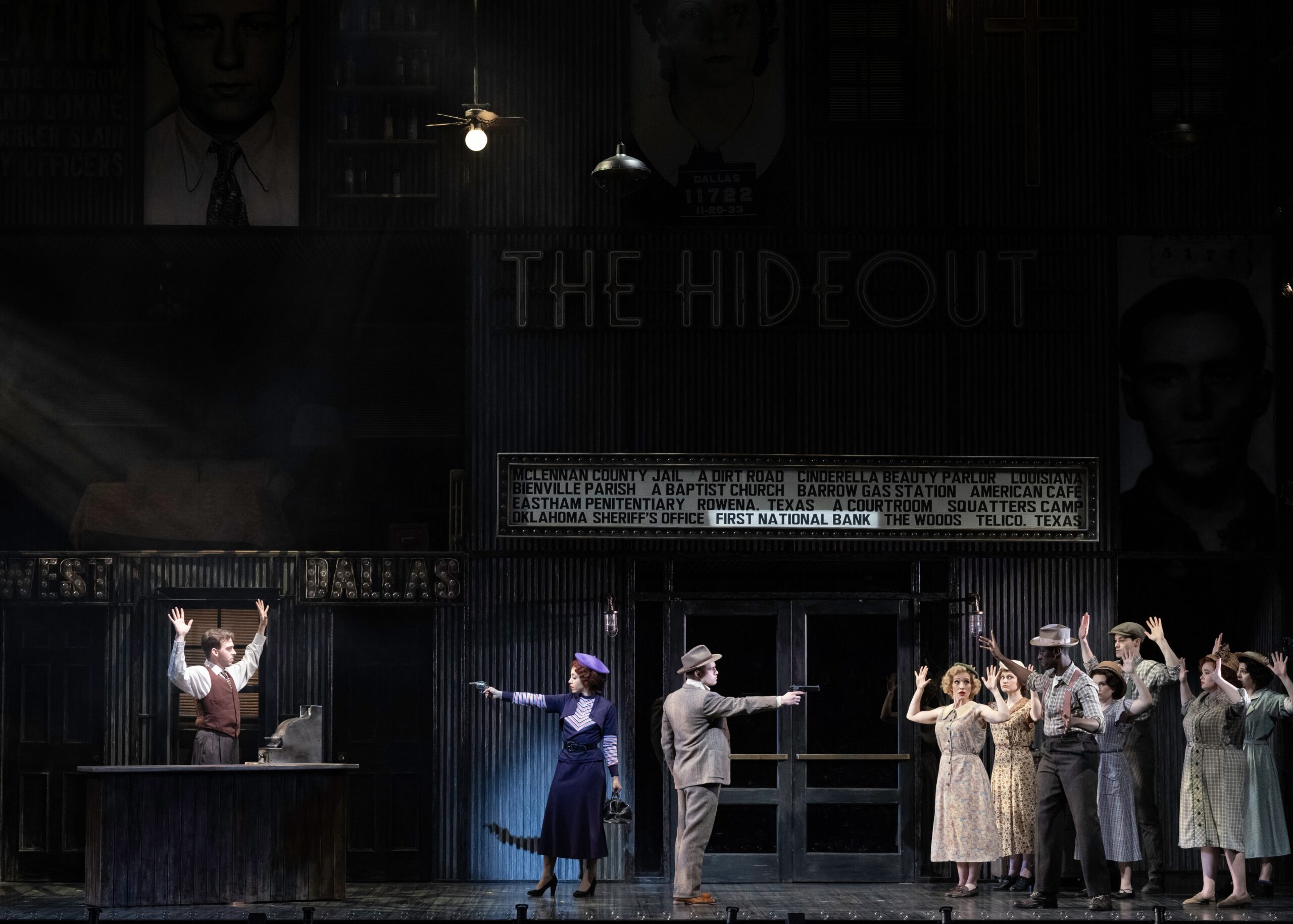
As expected, there were many guns used throughout this show, which is not a problem, and it was mostly well done. However, I did not care for the numbers in which the guns were pointed toward the audience. I felt the natural instinct to duck for cover and — prop gun or not — I don’t care for it pointed in my direction. In another misdirection, the onstage car headlights were also pointed directly at the audience and the light was painfully bright. I was unable to look directly at the scene when the car prop was used.
Pioneer Theatre Company gave everything they could into this production of Bonnie & Clyde but were unable to overcome the sluggish, uncertain book. I am struggling to understand the choice of this show as I found the storytelling to be underwhelming and drew no parallels or relevance to today’s world. There may be an audience satisfied with this production solely for the nostalgia and the night of live music. I found myself drawn in by these things as well as the aesthetically pleasing design, but the rest of the production was difficult to connect to as an audience member.
[box]Pioneer Theatre Company’s production of Bonnie & Clyde runs February 23 -March 9 at 300 S 1400 E Salt Lake City. Tickets are $55-$79. For more info, visit https://pioneertheatre.org/[/box]
